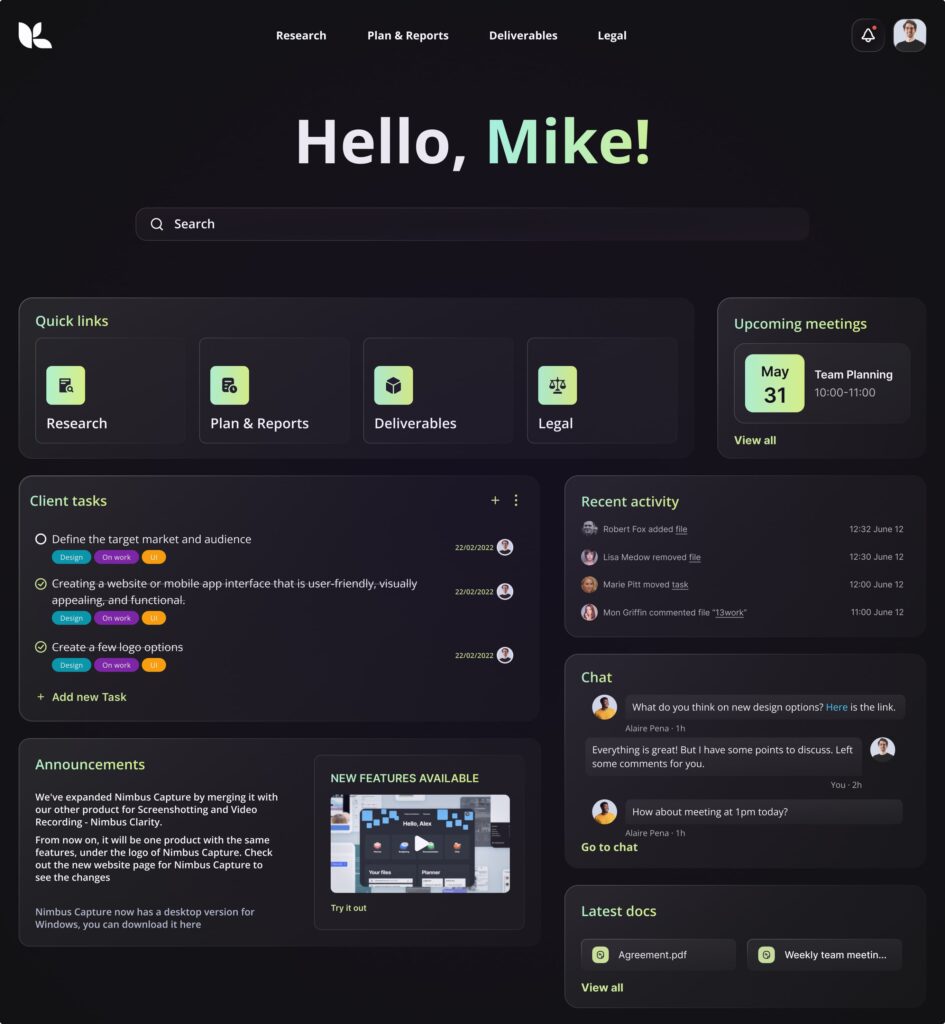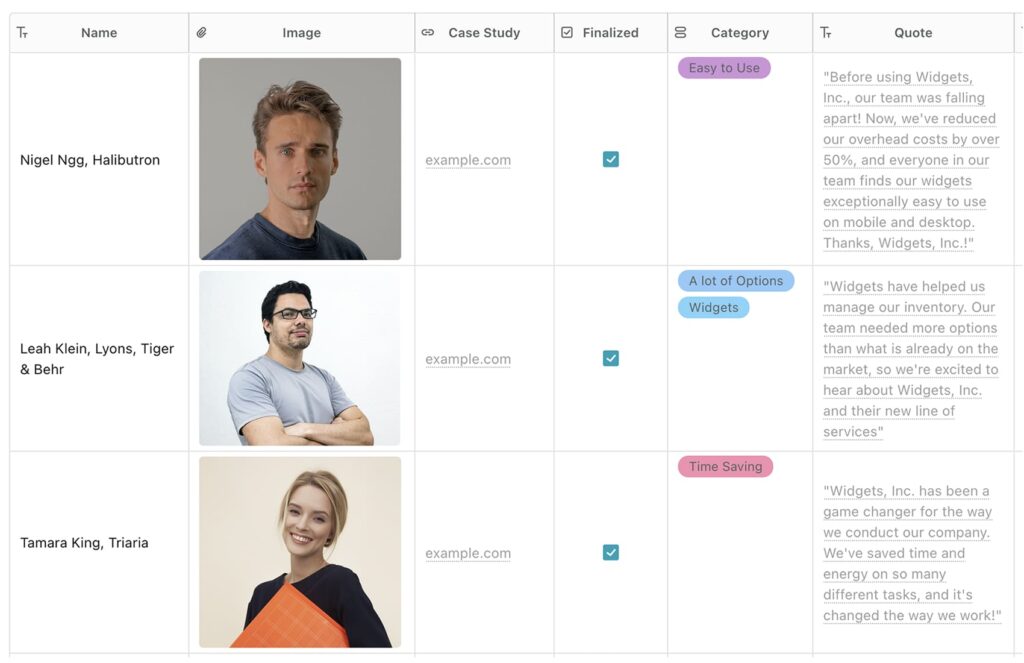
Client Management: Key Strategies for Success
- March 11, 2024
- 12 Min read
Running a business is far from easy, requiring careful consideration of numerous factors. It’s not enough to merely have a high-quality product or service; receiving ongoing payment for them is crucial. Did you know maintaining existing clients costs considerably less than acquiring new ones? Furthermore, satisfied customers are more likely to provide referrals and thus keep your business going. As a result, effective client management becomes increasingly important in the contemporary business landscape.
What is Client Management?

Client management, also known as customer relationship management, is the process that encompasses the practices, strategies and technologies that enable businesses to engage, understand and cater to the needs of their existing and prospective clients. It goes beyond the mere provision of goods or services, focusing on building meaningful connections and fostering customer loyalty. Companies that prioritize client management cultivate an environment where customer satisfaction is at the heart of their operations, leading to increased customer retention, brand loyalty and ultimately a stronger competitive edge.
One can not overestimate the significance of effective client management. We live in a world where consumers have almost unlimited access to all kinds of information, more than that – they have countless choices at their disposal. That is why personalized experiences matter today. A positive client experience not only improves customer satisfaction but also generates free word-of-mouth advertisement, which attracts new customers and drives business growth.
Fundamental Elements of Client Management
Client management is a business approach with an aim to develop and maintain strong relationships with end-users. It has a number of core components. By understanding and implementing them, businesses can cultivate loyalty and as a result achieve success. Let’s explore the fundamental elements of client management.
Customer understanding: The very first step in client relationship management is obtaining a deep understanding of your customers. This involves gathering data, conducting market research, analyzing the client’s needs, habits, behavior and preferences. Using this information, businesses can then tailor their products, services and communication strategies to meet their clients’ expectations in the best possible way. Want a successful business? Make it a point to always listen to what your client asks!
Effective communication: Honest and transparent communication is more than significant in customer management. Businesses should establish efficient channels to communicate with clients directly, resolve their issues quickly and provide timely updates. Regular client communication helps to build trust, ensures transparency and demonstrates your devotion to customer satisfaction.
Personalized customer experience: Treating each customer as an individual, not a case, is crucial in client management. By tailoring customer experiences, businesses can create a sense of exclusivity and demonstrate that they value their clients. Customized solutions, personalized services and individual offers help create a positive customer experience contributing to long-term loyalty.
Proactive relationships with clients: Successful client management is not just problem-solving. It also involves proactively building good client relationships, keeping clients updated at every stage of interaction and treating the clients’ goals as if they were your own. To become a partner to happy clients, businesses should demonstrate a true interest in their success. However, the responsibility does not solely lie with the business owner; it is crucial for the entire team to understand this. Hence, improving the client management skills of employees on an ongoing basis becomes increasingly important today.
Exceptional customer service: Addressing inquiries quickly, resolving issues efficiently, managing client expectations and going above and beyond to exceed them builds a positive brand image and fosters customer loyalty. By consistently delivering outstanding service, businesses can differentiate themselves from competitors and turn their customers into the advocates for their brand. Be determined to under-promise and over-deliver.
Continuous relationship evaluation: Client management is an ongoing process that requires continuous evaluation and adjustment. Businesses should regularly assess the satisfaction levels of their customers, gather feedback and identify areas for improvement. Implement key performance indicators (KPIs) to give your team and your client quantitative metrics. By continuously monitoring the health of client relationships, organizations can proactively address any challenges and adapt their strategies to better serve their clients’ evolving needs.
Effective Client Management Strategies for Success
Managing clients effectively is essential for businesses aiming to build good relationships, foster loyalty and drive sustainable growth. By implementing the right strategies, organizations can optimize customer interactions and maximize customer satisfaction. To effectively manage clients, consider the following approaches.
Focus on transparency
Honest and transparent communication is key to successful client management. Clearly communicate progress, challenges and any changes that may impact the client. Transparency builds trust and helps establish a long-lasting client relationship. If a client feels dishonesty or manipulation, they are unlikely to choose your business for future purchases.
Invest in communication

Establish open and proactive communication channels with existing and potential customers; always be on the same page with them. Regularly update them on project progress, address concerns promptly and actively seek feedback. Clear and transparent communication builds trust with your clients and ensures that customers feel heard and valued. Don’t hesitate to leverage software solutions, such as a customer portal, a client management system or other tools and services, as they offer numerous tangible benefits for streamlining client communication.
Set expectations clearly
Ensure that expectations are set clearly from the beginning. Define project scope, deliverables, timelines and any limitations. Clearly communicate what customers can expect from your business, and outline how you will work together to achieve their desired outcomes. Good client managers know it is better to under-promise and over-deliver on your commitments than fail to meet client expectations. Happy clients always return, remember? More than that, they sometimes bring in a new business with them.
Always follow up
Following up with customers is not only one of the best practices of successful client management but also an essential part of client retention. It showcases your dedication to the satisfaction and happiness of your customers. By proactively reaching out after an initial interaction or completed project through emails, phone calls or mobile app messages, you show that you value them and care about their experience.
Respect your client’s time
Recognizing and valuing the time commitments of your customers demonstrates professionalism, courtesy and a commitment to providing excellentc. By prioritizing efficiency and minimizing unnecessary delays, you show that you understand the importance of their time and aim to make their experience as smooth and productive as possible.
Power of Effective Client Management: Key Advantages
When a company prioritizes strong client relationships and implements sound management practices, it can reap significant advantages. Here are just a few benefits of successful client management.
Increased customer satisfaction: It is all about the customer and has always been. Through personalized experiences, timely issue resolution and more than exceptional service, businesses can develop a good reputation among users, which will inevitably result in higher satisfaction levels and lifetime loyalty.
Enhanced reputation and favorable word-of-mouth: Happy customers always return, more than that, they become advocates for your brand by recommending your product or service to their friends and acquaintances. Therefore, by making your clients happy, you increase your reach, strengthen your reputation, retain existing customers and attract new clients.
Improved client retention: As we already mentioned, business today is more about retaining old clients than attracting new ones. It’s generally accepted that acquiring a new customer costs three times more than selling to an existing customer. By nurturing client relationships, maintaining regular communication and proactively addressing client needs, businesses can enhance customer loyalty, leading to long-term partnerships and a steady cash flow.
Greater efficiency: Through the establishment of an efficient client management system for clients, you can significantly reduce the time spent on administrative tasks, reduce errors and ensure the smooth operation of the business. Streamlined workflows allow teams to concentrate on the delivery of value to the customer, which in its turn will lead to an improved overall performance. And here’s where a good client management software hits the stage.
Competitive advantage: Those companies that successfully manage their client relationships gain significant competitive advantages. By delivering outstanding customer experiences, establishing strong working relationships and going beyond the expectations of their customers, they distinguish themselves from their competitors, become the preferred choice in the market and thus attract new customers and retain existing ones.
3 Key Principles of Customer Relationship Management
Establishing a new culture of innovation in the field of CRM is vital. This involves developing a suitable mindset and utilizing best practices while consistently looking for opportunities to improve your CRM systems, processes and results. It also involves being willing to experiment with new functions, tools & methods and using feedback, information and industry standards to improve. There are a few basic principles that organizations with excellent client management tend to adhere to.
#1 Identify and meet your client’s needs
By understanding the unique requirements, preferences and pain points of your customers, you can tailor your products, services and solutions to effectively address their specific needs and thus keep your clients satisfied. This involves actively listening to customer feedback, conducting market research and staying attuned to industry trends. Remember that happy clients are grateful clients.
#2 Prioritize revenue and retention over reducing costs
While attracting new clients may seem enticing, nurturing current customers proves to be more beneficial in the long run. Existing clients are more likely to remain loyal, continue doing business and even become brand advocates, generating valuable word-of-mouth referrals. By investing in the satisfaction of current clients, businesses can minimize acquisition costs as grateful customers tend to share their positive experiences with others, which attracts new clients without any investments from your side.
#3 Train your team
Investing in client management skills for employees across all departments is crucial for fostering a customer-oriented culture within an organization. Hire client managers, if necessary. When every employee recognizes that a happy customer is a priority, they actively contribute to delivering exceptional experiences, building strong relationships and driving business growth. Whether it’s the sales team, customer support or other internal teams, a customer-centric mindset and good problem-solving skills ensure that each interaction is focused on meeting client needs and exceeding expectations.
Best Practices of Truly Efficient Client Management
- Open and clear communication: Prioritize transparent and proactive communication both with current and prospective clients to foster trust and ensure expectations are met.
- Proactive issue resolution: Identify and address client concerns, resolving customer queries effectively and in a timely manner to maintain client satisfaction.
- Continuous improvement: Continuously seek feedback, analyze performance and adapt your client management strategies to enhance customer satisfaction and loyalty.
- Value creation: Focus on delivering value and solving client problems, ensuring that your offerings align with their needs and provide tangible benefits.
- Consistent client experience: Strive for consistency in delivering a positive customer experience across all touchpoints, ensuring a cohesive and seamless journey.

- Constant evaluation: Regularly gather client feedback, conduct satisfaction surveys and evaluate your performance to identify areas for improvement and refine your client management approach.
- Focus on retaining clients: Companies that prioritize attracting new clients over retaining existing ones often fall into one of the most common client management pitfalls. Retaining loyal customers has always been more cost-effective than constantly seeking more clients.
- Implementation of a client portal: A well-designed customer portal centralizes and stores the client’s information, including their history and details on past projects, thus optimizing and automating customer communications, and enhancing the overall customer experience.
- Customer education: Improve your current customers’ understanding of your work process to help them achieve value faster. Let them track your project’s progress, be detail-oriented at every stage of interaction. Customer education is of utmost importance as it helps create long-lasting relationships both with a new client and the old one.
Software in Customer Management: A Case Study
Let us delve into a compelling case study that shows how a business leveraged a customer management software platform to revolutionize their client management approach, resulting in significant benefits and remarkable outcomes.
Challenge:
Leadable, an Irish remote agency that offers highly personalized outbound solutions, struggled with finding a time- and cost-effective way to share data with their customers.
Solution:
Leadable implemented FuseBase , a customer management software platform that served as a single source of truth for clients. It allowed for efficient sharing and secure access to data, while also offering personalized client portals.
Implementation:
Their approach to using FuseBase involves setting up a universal template with all necessary sections like the welcome page, onboarding summaries, reporting, communication channels, etc. Before onboarding clients, Leadable’s Project Manager or Account Executives duplicate this template and populate it with relevant data on each client. This ensures every client’s portal is uniquely tailored to their company, aligning with the company’s commitment to personalization and relevance.
Results:
FuseBase improved Leadable’s efficiency and client experience by consolidating various tools into one intuitive platform. This not only streamlined information sharing and enhanced client interaction but also boosted the company’s professional image.
“So far the results have been great! It’s a lot easier from a client’s perspective now to access all the information they need as well as being able to share their own comments, questions, and concerns. Having a custom-made portal with the option to have it hosted on our domain also makes it look a lot more professional. As a remote agency, one of our most important things to consider is our tech stack; with the proper tools in place we can really set ourselves apart from other agencies while making both employees’ and clients’ lives easier.”
Seb Vissers,
Marketing Manager at Leadable
Conclusion
In today’s interconnected world, where social media and online platforms have given consumers a powerful voice, organizations must embrace client management as an integral part of their overall business strategy.
A single negative customer experience can quickly ripple through social networks, potentially tarnishing a brand’s reputation and impacting its bottom line. Conversely, organizations that excel in client management can cultivate a positive brand image, inspire customer advocacy and differentiate themselves from competitors in the market.
It’s crucial to invest in a client management system that not only meets your current needs but can also adapt to future requirements. FuseBase stands out in this regard, with its robust features, intuitive interface and unmatched support.
The good news is, you don’t have to take our word for it. You can experience the benefits of the FuseBase client management software firsthand.
Elevate your client management strategy today with FuseBase!
Explore our LinkedIn page to stay up-to-date with the latest news and updates!
Found it useful? Share the article with your community
Subscribe to our blog!
Get weekly tips and insights on how to grow your business